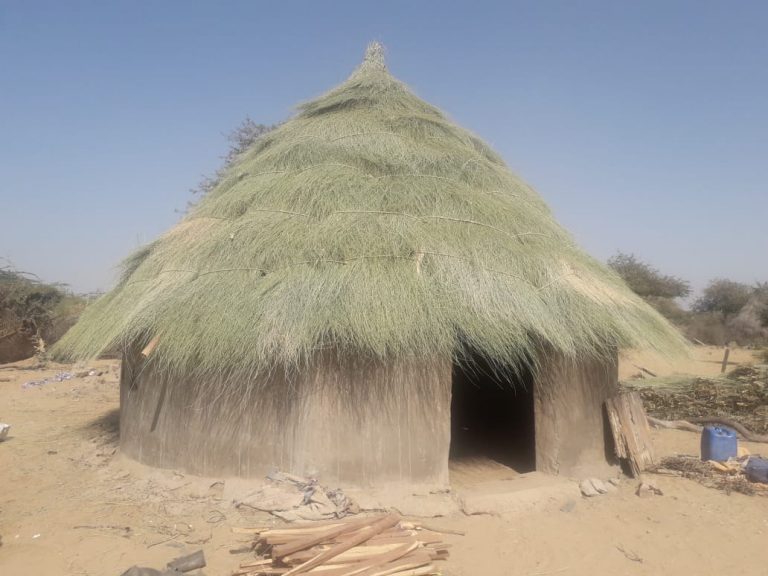
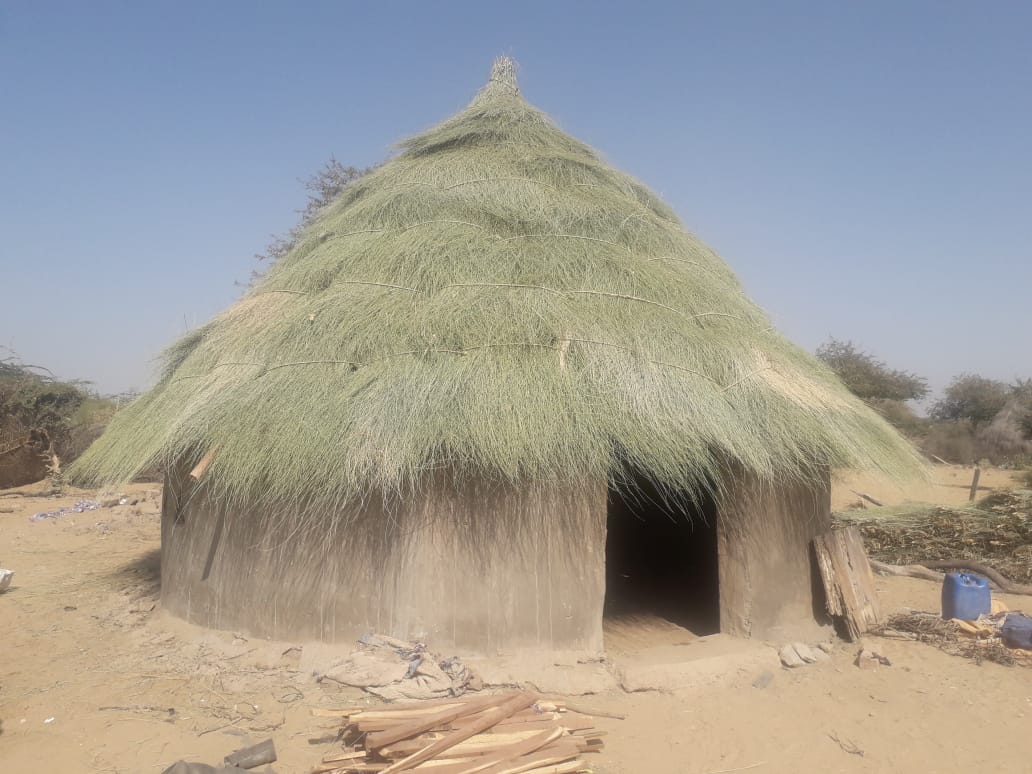 The wilderness holds answers to more questions than we have yet learned to ask. The outdoor is where I go to clear my mind. If I have to write something, being outside helps me think more clearly and pen it down.
The wilderness holds answers to more questions than we have yet learned to ask. The outdoor is where I go to clear my mind. If I have to write something, being outside helps me think more clearly and pen it down.
By Nasir Aijaz
I often embark on journeys to the wilderness, following what the Nancy Wynne Newhall, an American photography critic of 20th century, had said that ‘the wilderness holds answers to more questions than we have yet learned to ask’. The outdoor is where I go to clear my mind. If I have to write something, being outside helps me think more clearly and pen it down.
And for finding answers to certain questions on environmental impact of coalmining in Thar Desert, I once again left Karachi after three years for Desert District Tharparkar.
I had been visiting this part of the Thar Desert since about four decades and observing the conditions the desert and its dwellers had been going through – the miseries caused by natural disasters like frequent droughts, sometimes flash floods caused by torrential rains and also the earthquake jolts, and yes the joyful days of Thari people during the rainy season, their culture, traditions etc. I had been travelling to Thar Desert when there was no electricity, no telephone and no metaled roads – just tracks between the sand dunes and the trucks of WW II era operating as the only mode of public transport that also carried animals and dumped other goods along with passengers.
However, great changes have taken place in Thar Desert and in the lives of most of its dwellers since last two decades after construction of metaled roads, provision of electricity, mobile phone network, internet service, establishment of private and public sector hospitals, educational institutions etc. And yes, new air-conditioned passenger coaches and other luxury vehicles have also replaced the trucks of WW-II era reducing the travel time to great extent. The development process got impetuous after coalmining kicked off here about a decade back. Thar Desert now seems a blend of wilderness, miseries and the development, as although certain towns present an urbanized look, one can observe miseries being suffered by people living in the old traditional hutments, locally called as ‘Chuanra’ built at sand dunes, and the camels, cows and goats grazing in the jungle of innumerable but scattered trees and wild bushes on both sides of roads, while traveling in luxury vehicles on metaled roads.
The water had been scanty in Thar Desert and the people used to dig deep wells to fetch the water or from ‘Tarais’ (the low-lying areas between the sand dunes) and artificially dug depressions, where the water accumulates during the rainy season. However, over the years, certain developments have taken place, as in some of the towns the water is being supplied through pipelines while in villages Reverse Osmosis (RO) Plants have been installed. But unfortunately, most of these RO plants, installed by government, often remain inoperative. At some places, the non-government organizations use to operate the RO plants or have installed hand pumps to help desert people get the water. In remote areas of Thar, the people still fetch water from deep wells and are compelled to consume it despite being brackish.
Under the sands of the Thar Desert lies one of the world’s largest coal reserves estimated to be 170 billion tons, which can meet the energy needs of Pakistan for the next few centuries. The reserves, buried deep under the desert sands, are separated by giant fossilized aquifers. Certain hydro geological studies show the presence of three aquifer zones at varying depths: above the coal zone, within the coal zone and below the coal zone.
Bashir Ansari, a Mining Engineer and the pioneer of coalmining in Thar, had once said that the water available in such aquifers could irrigate the entire Thar Desert. Listening to his words, I had recalled a quote from Bible: “For waters will burst forth in the wilderness, and streams in the desert plain. The heat-parched ground will become a reedy pool, and the thirsty ground springs of water. In the lairs where jackals rested, there will be green grass and reeds and papyrus.”
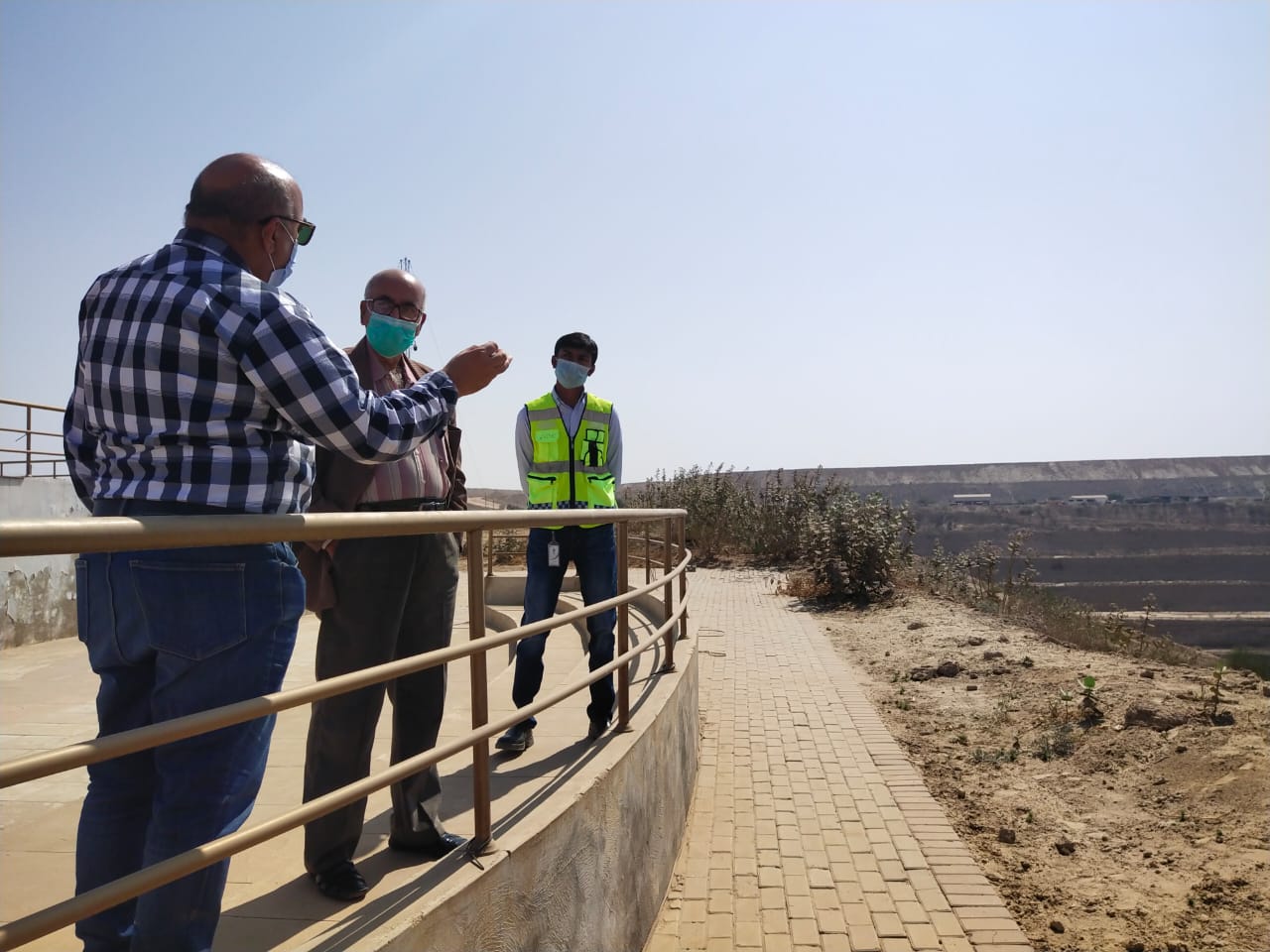 And it happened later, when Sindh Engro Coal Mining Company (SECMC) started excavation at Thar Coal Block-2, the water oozed out at the depth of 180 meters, which had to be discharged somewhere far from the coalmining site. The SECMC had selected an area for this purpose near Gorano Village.
And it happened later, when Sindh Engro Coal Mining Company (SECMC) started excavation at Thar Coal Block-2, the water oozed out at the depth of 180 meters, which had to be discharged somewhere far from the coalmining site. The SECMC had selected an area for this purpose near Gorano Village.
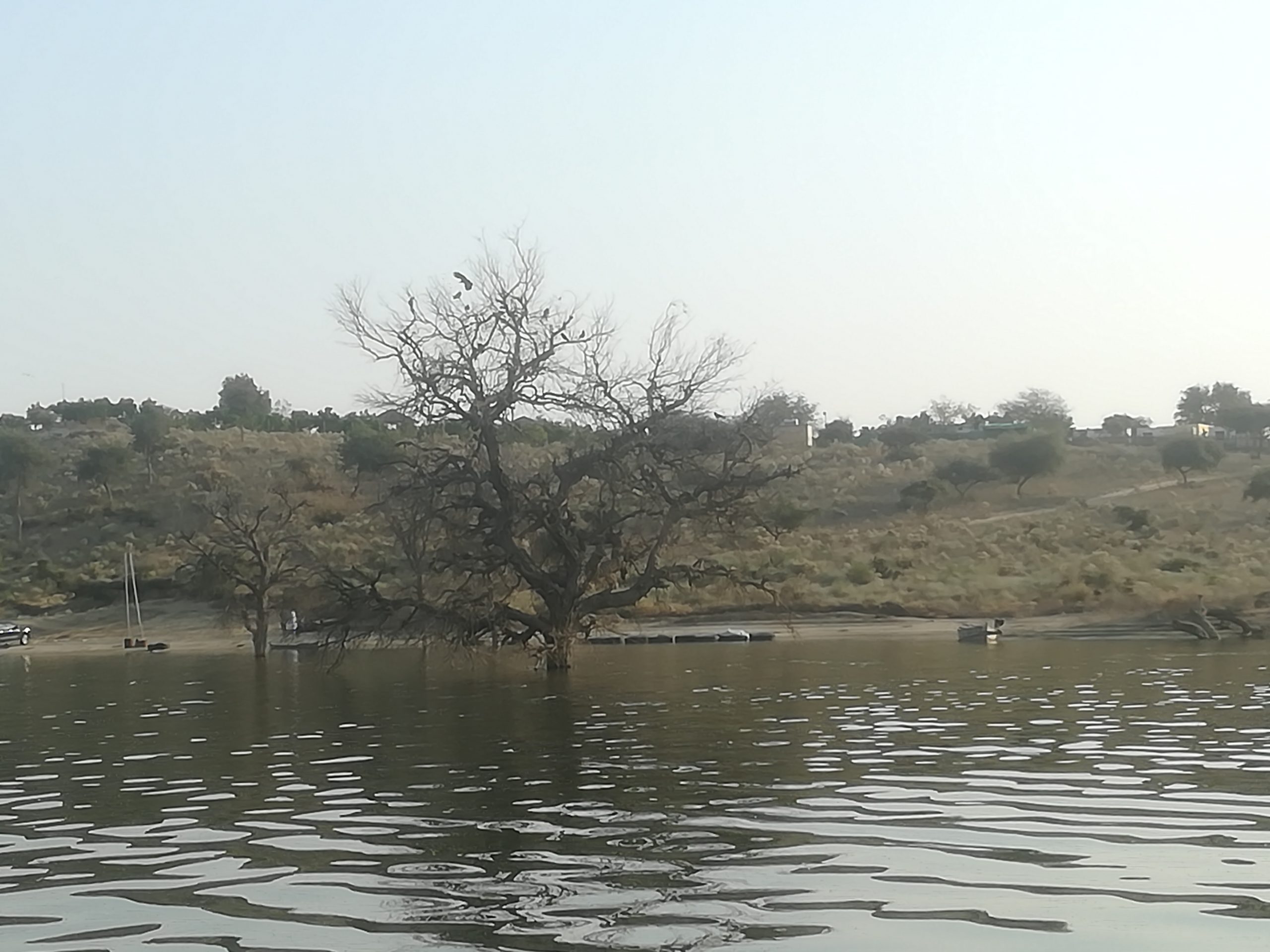 My first destination on first day of journey was this Lake named after Gorano Village, about 40km from Islamkot town and 27km from coalmine site. It was a low-lying area spread over 1500 acre, and found suitable to release water discharged from coalmine. The SECMC had purchased this land owned by the local people and installed some 17 tube-wells to release brackish water of open pit coalmine through a long pipeline to this depression, which turned into a lake covering about 600 to 700 acres. For beautifying the area and providing recreation facility to the local people as well as the visitors, the company had developed an amusement park erecting colorful sheds, swings and benches at the top of nearby sand dune. I was curious to observe the changes that might have taken place after my visit in 2018.
My first destination on first day of journey was this Lake named after Gorano Village, about 40km from Islamkot town and 27km from coalmine site. It was a low-lying area spread over 1500 acre, and found suitable to release water discharged from coalmine. The SECMC had purchased this land owned by the local people and installed some 17 tube-wells to release brackish water of open pit coalmine through a long pipeline to this depression, which turned into a lake covering about 600 to 700 acres. For beautifying the area and providing recreation facility to the local people as well as the visitors, the company had developed an amusement park erecting colorful sheds, swings and benches at the top of nearby sand dune. I was curious to observe the changes that might have taken place after my visit in 2018.
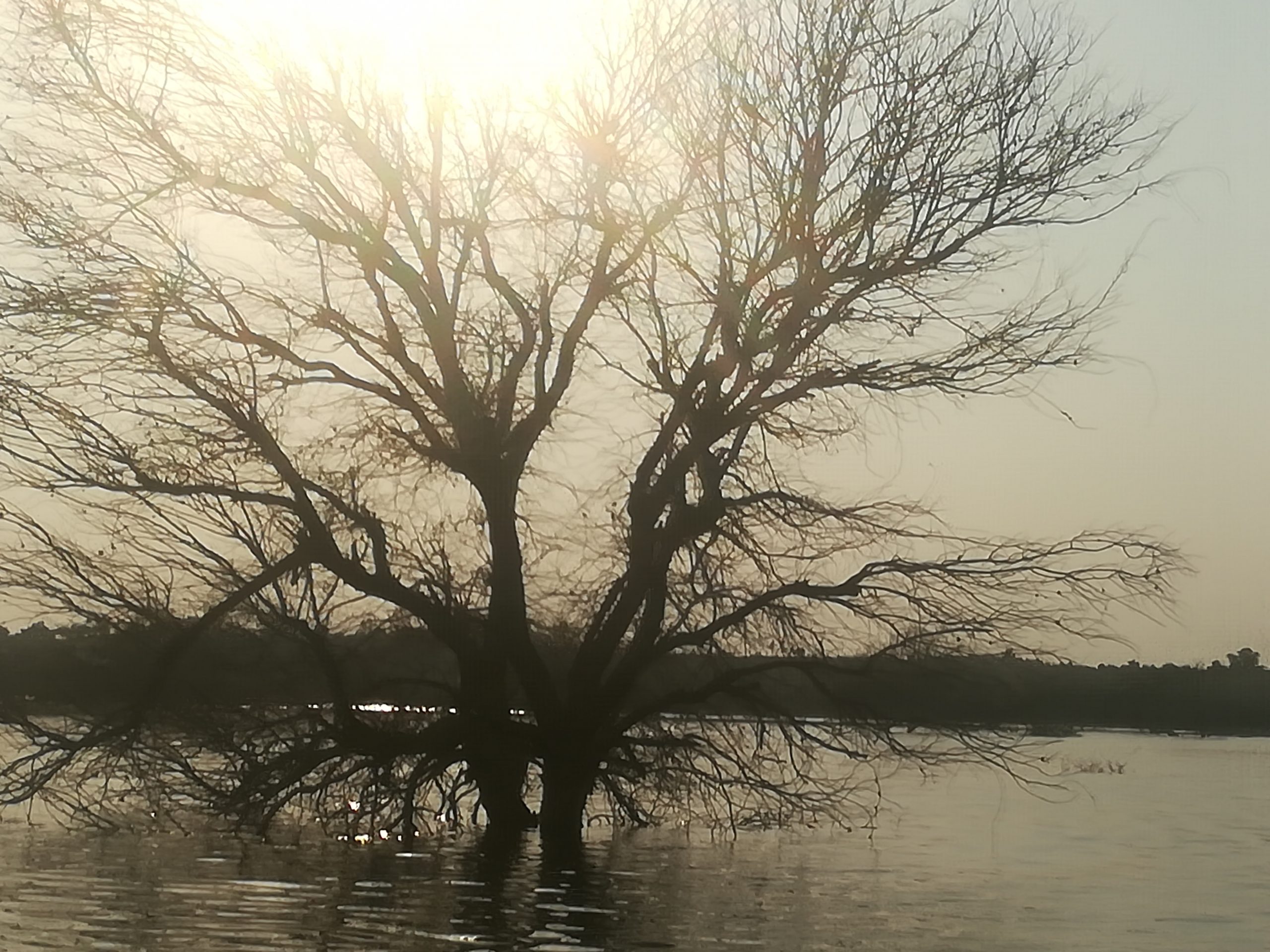 The park looked well-maintained by the gardeners present there however I observed that a large number of trees scattered in and around the lake, which had turned lush green due to abundance of water at that time, had now lost their color and leaves and almost bald and blackish trees could be seen there. Another new thing I noticed from atop the dune was activity of certain people at the lakeside. They were some fishermen and two boatmen. I was told that the fishermen were locals and employed by the company for fishing while two boatmen, also hailing from Hathoongo, a desert town of Sanghar district, were hired from Pakistan Navy. A man drove us from dune-top to the lakeside.
The park looked well-maintained by the gardeners present there however I observed that a large number of trees scattered in and around the lake, which had turned lush green due to abundance of water at that time, had now lost their color and leaves and almost bald and blackish trees could be seen there. Another new thing I noticed from atop the dune was activity of certain people at the lakeside. They were some fishermen and two boatmen. I was told that the fishermen were locals and employed by the company for fishing while two boatmen, also hailing from Hathoongo, a desert town of Sanghar district, were hired from Pakistan Navy. A man drove us from dune-top to the lakeside.
Watch the Video: Gorano Lake
Soon as we reached at lakeside, a man came from a small hut and introduced himself as Zakaullah, a fisherman employed by the company. And my first question to him was regarding decaying trees. “It’s because of brackish water,” he told and added, “The trees in the mid of lake surrounded by brackish water since years have turned grey and bald but you see the trees in surrounding areas are green.”
“We have now planted the mangroves saplings along the lake, which can grow in brackish water like in coastal areas,” he said pointing to mangrove plantation.
In the meantime, the boatmen had installed the engine to the boat and were ready to take me for a boat ride. During half an hour ride, the boat passed close to bald trees from where some migratory birds flew away noticing the human presence. “The migratory birds have found a new wetland – safe from the threat of hunting,” one of the boatmen told. “Currently their number has decreased due to warm weather, but you can see here flocks of migratory birds at the lake during winter.”
The IUCN’s ecological survey had also stated that Gorano Dam was relatively safe for migratory birds.
 As the sun was about to set behind the sand dunes, we returned to the lakefront. During the boat ride I had witnessed several fishing nets laid in the lake. Before stepping out of the boat, I saw two fishermen pulling a net filled with fish catch towards us. The net had in it about a dozen fishes of different species, size and weight and still alive being in water. One of them was of about five kilogram weight. A fisherman took out a black color medium size fish from the net and set it free in the lake. “We have named it as ‘Major’ having no taste to eat,” he told. His remark made us all to laugh.
As the sun was about to set behind the sand dunes, we returned to the lakefront. During the boat ride I had witnessed several fishing nets laid in the lake. Before stepping out of the boat, I saw two fishermen pulling a net filled with fish catch towards us. The net had in it about a dozen fishes of different species, size and weight and still alive being in water. One of them was of about five kilogram weight. A fisherman took out a black color medium size fish from the net and set it free in the lake. “We have named it as ‘Major’ having no taste to eat,” he told. His remark made us all to laugh.

 It was in my knowledge that the Thar Foundation, established by SECMC for carrying out social welfare activities in Thar Coal Block-2, had initiated fish breeding in Gorano Reservoir under its Aqua Culture Development Project, and released one hundred thousand fish seeds initially and later another 200000 seeds were released in 2019 in consultation with Sindh Fisheries Department. The laboratory tests had declared the Gorano Reservoir fish fit for human consumption.
It was in my knowledge that the Thar Foundation, established by SECMC for carrying out social welfare activities in Thar Coal Block-2, had initiated fish breeding in Gorano Reservoir under its Aqua Culture Development Project, and released one hundred thousand fish seeds initially and later another 200000 seeds were released in 2019 in consultation with Sindh Fisheries Department. The laboratory tests had declared the Gorano Reservoir fish fit for human consumption.
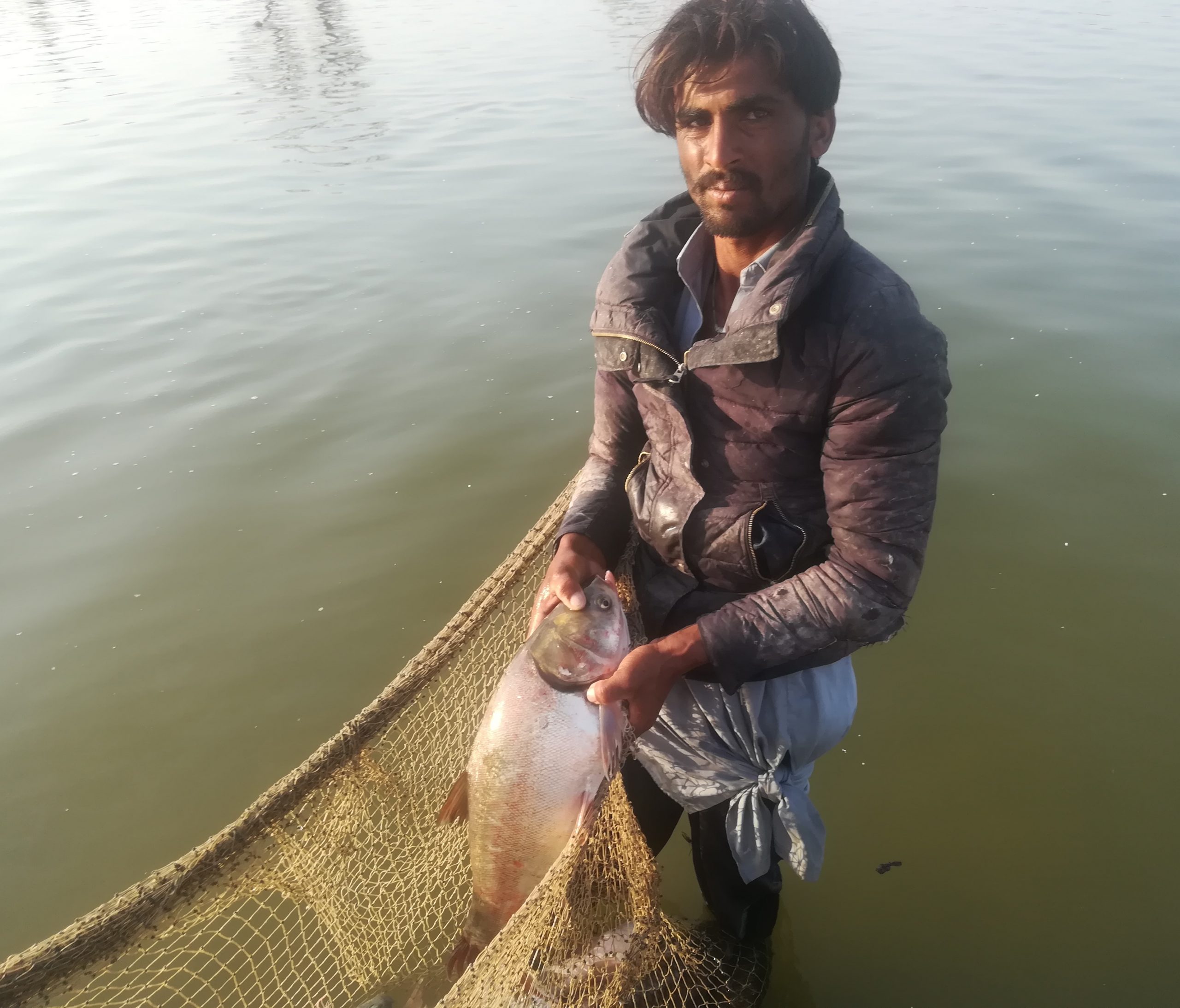 Availability of fish in Thar Desert was an unbelievable development but the fisherman told that seven fish species including Morakhi, Rohu, Theli, Kuriro, Gulfam, African Catfish, and Dangri are found there in abundance to surprise of many people.
Availability of fish in Thar Desert was an unbelievable development but the fisherman told that seven fish species including Morakhi, Rohu, Theli, Kuriro, Gulfam, African Catfish, and Dangri are found there in abundance to surprise of many people.
“In two years more than 45000 Kg fish catch was distributed to local villages free of cost,” Zakaullah told. “Even today, many villagers came here to get the fish.”
Two officials of Thar Foundation, who accompanied me, also confirmed saying that the Foundation has no plans of marketing it. “Entire fish catch is distributed among local villagers free of cost. However there is restriction on fishing by locals. Foundation has employed its own fishermen for this purpose.”
When I inquired how the sweet water fish species survive in brackish water, Zakaullah said, “Even in sweet water fish farming, you need to mix certain amount of salt. In this case, it is already available and you would be surprised to know that the fish raised here is more healthy and bigger in size and weight than rest of fish farms in Sindh.”
“Believe me sir, one of these fish species has grown to such a size and weight that it cannot be caught easily. Once we caught and weighed it to be of 15kg,” he told.
And later, I confirmed his statement regarding raising the fish in saline waters from certain international studies. An IUCN report also refers to a study in West Virginia where many active and abandoned mine sites have plentiful water supplies suitable for raising many aquaculture species. Another international report also mentioned that as the use of conventional water sources such as springs, streams and ponds approach their production limits in USA, alternative water sources for raising fish has become more attractive. One such non-traditional source is mine water.
My next day started with visits to Thar Foundation’s school and a most modern hospital in Islamkot. The school was the biggest one of 27 schools run by the Foundation with enrollment of several hundred students while the hospital had a functional OPD with neat and clean atmosphere. Construction of its 250-bed wards was at the stage of completion.
 Then I proceeded to observe the progress of bio-saline project launched in coalmine area to introduce bio-saline agriculture. Traditionally, the Thar people are dependent on rain-fed agriculture, but here highly saline ground water drawn from the depth of 180-200 meters as part of mining activity is being used to grow fodder and crops. A pilot Project was initiated in November 2016 and different varieties like Guar, Bajra, Gidro (Melon) and Moong (Lentil) Pea, Apple Beri and Moringa have been successfully grown. Seeing positive results, project was expanded to larger scale with addition of sunflower, moong, Toriyo, lady fingers and other crops. “Thar Foundation has joined hands with Pakistan Agriculture Research Centre (PARC) to conduct further research and mainstreaming of bio-saline agriculture in Thar,” Naseer Memon, General Manager of the Foundation, who had joined me there, told.
Then I proceeded to observe the progress of bio-saline project launched in coalmine area to introduce bio-saline agriculture. Traditionally, the Thar people are dependent on rain-fed agriculture, but here highly saline ground water drawn from the depth of 180-200 meters as part of mining activity is being used to grow fodder and crops. A pilot Project was initiated in November 2016 and different varieties like Guar, Bajra, Gidro (Melon) and Moong (Lentil) Pea, Apple Beri and Moringa have been successfully grown. Seeing positive results, project was expanded to larger scale with addition of sunflower, moong, Toriyo, lady fingers and other crops. “Thar Foundation has joined hands with Pakistan Agriculture Research Centre (PARC) to conduct further research and mainstreaming of bio-saline agriculture in Thar,” Naseer Memon, General Manager of the Foundation, who had joined me there, told.
During the visit to Apple Beri plantation spread over six acre land and a nursery with over a million saplings of different flowers, Naseer Memon told that the entire produce of Apple Beri and vegetables is also distributed among local people free of cost.
The sweetness of Apple Beri grown there over six acre area really surprised me when I tasted randomly plucked fruit.
The saplings of various plants grown at nursery are supplied to various organizations. Another success was raising of trees over 60 acres of land adjacent to Bashir Ansari Memorial Park. The trees here had grown as tall as a man’s height, and all with the saline water.
After a whirlwind tour of open pit coalmine and having brief chat with mining engineers hailing from Thar and women dump truck drivers busy transporting the excavated earth to dumping area, I visited the village Sengaro where a young village girl operates the RO Plant.
I had met and interviewed twenty under-training Thari women truck drivers during previous tour and now they were confidently driving the heavy vehicles. So far 50 women have acquired such training while a group of another 16 Thari women was being imparted the training at Thar Foundation’s Driving School breaking the traditional taboos. These women are provided stipend, uniform and day-care facility for their kids and lunch.
Watch the Video: Thari Women Dump Truck Drivers
Following a successful program of women dump truck drivers, Thar Foundation took a new and novel initiative of training and employing Thari women to operate and maintain its RO plants. “Thar Foundation has trained 18 local women in operation and maintenance of RO plants and so far 12 of them have been employed at our RO plants in Block-2 area,” Naseer Memon told introducing the Trainer and Supervisor Ms. Heena Kolhi and a village girl Nabeela who operates the RO Plant at her village.
Heena Kolhi, a 25-year girl from Islamkot, District Tharparkar faced a lot of hardship to complete her education in an area where the literacy rate among women is less than 15 percent. Heena belongs to a family which is discriminated against as a “lower caste” community because of their family profession of janitorial services to the local town committee.
My curiosity then took me to two other villages – Thariyo Halepoto and the New Senhri Dars. The New Senhri Dars is the relocated and newly built village with spacious 172 households of old village Senhri Dars. The village was built as per town planning ensuring state-of-the-art structures, enhancing the quality of life without compromising the natural ecosystem, social fabric, lifestyle and traditions of the Thari people. The new village has a network of wide metaled roads, a 10-shop market, a temple and a mosque and community center.
 Thariyo Halepoto Village located at a distance of two kilometers from coalmine is also to be relocated like the Senhri Dars Village and I had detailed exchange of views with the village people including shop-owners, serving and retired teachers as well as the laborers. The dwellers of this village belonged to Halepota, Kolhi, Bheel and Meghwar communities. “Feeling sad on relocation from ancestral abodes is natural, but you know the people will get big built houses with provision of all facilities,” Muhammad Hassan Halepoto, a serving teacher, Bashir Halepoto, a retired teacher and Qurban Ali, a teacher, who also runs a cloth shop in village, told. One of them jokingly said, “The people of other villages too are approaching the coal company for relocating them.”
Thariyo Halepoto Village located at a distance of two kilometers from coalmine is also to be relocated like the Senhri Dars Village and I had detailed exchange of views with the village people including shop-owners, serving and retired teachers as well as the laborers. The dwellers of this village belonged to Halepota, Kolhi, Bheel and Meghwar communities. “Feeling sad on relocation from ancestral abodes is natural, but you know the people will get big built houses with provision of all facilities,” Muhammad Hassan Halepoto, a serving teacher, Bashir Halepoto, a retired teacher and Qurban Ali, a teacher, who also runs a cloth shop in village, told. One of them jokingly said, “The people of other villages too are approaching the coal company for relocating them.”
The villagers also introduced a person – Manzoor Ahmed Halepoto, basically a laborer, but turned to be Chinese translator, as while working with Chinese engineers since years, he learnt their language that benefitted him financially. “I earn Rs.70000/- a month working as Chinese translator,” Manzoor told.
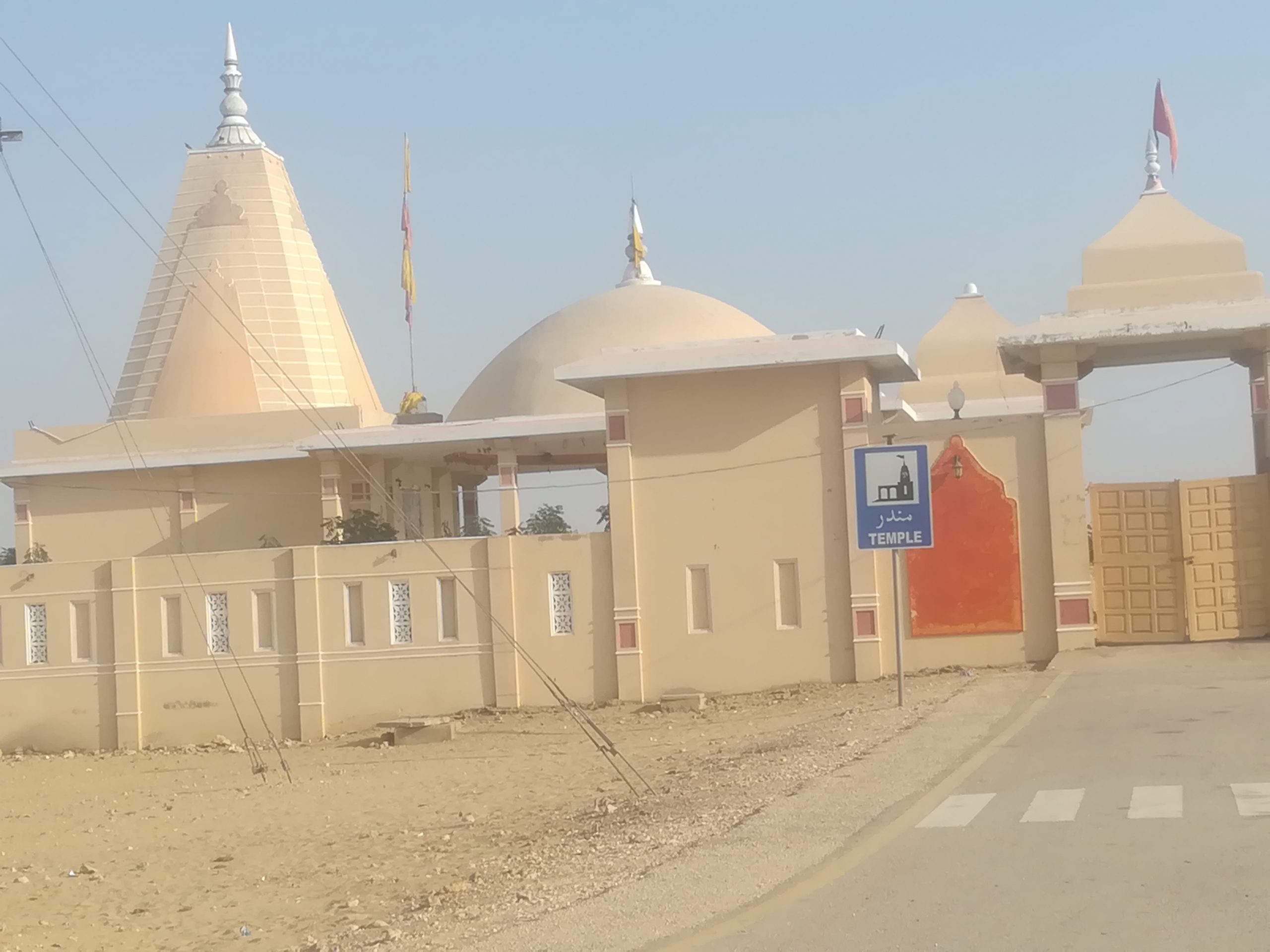
Before leaving, I enquired about supply of electricity to the villages falling in the limits of Thar Coal Field. “We receive zero amount bills for electricity we consume, as Sindh government pays the bills for 100 units electricity to the WAPDA,” the villagers told.
On my way back to Karachi, I thought it wouldn’t be exaggeration if I claim that the Thar Desert, like other deserts of the world, tells a different story every time I ventured on it. The painful story during my sojourn was that although this particular part of Tharparkar has been going through transformation, there were lots of reports of committing suicide by the poor Thari people across the district.
And another one of the new stories is that the Chinese company – SSRL (Shanghai Electric) working on coalmine and power plant in Thar Coal Block-I has hired the people mostly from outside Sindh and has not initiated any project under the corporate social responsibility.
The SSRL is installing two coal-fired power plants of 660 MW for which the Sindh government has earmarked 621 acre land. The company has acquired 180 acre land from the villagers at the rate of Rs.150000/- per acre.
_____________________
About the Author